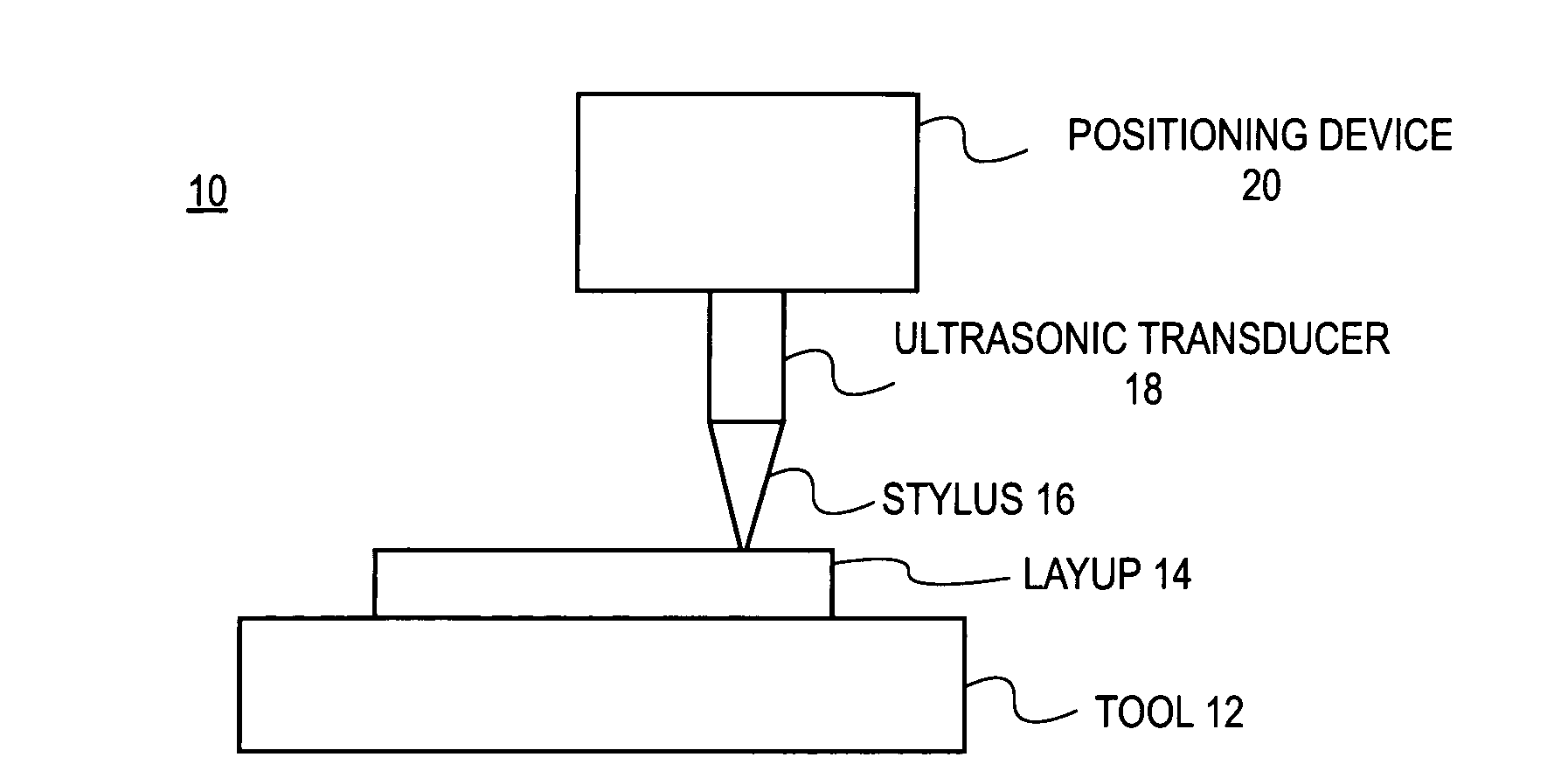Cutting sequence for net trimming a composite layup at an oblique angle
a composite material and oblique angle cutting technology, applied in the direction of metal working devices, etc., can solve the problems of dragging the composite material out of position, reducing the tendency of the cutting blade to bind the resin, and the cutting blade may adhere to the layup at an unacceptable rate,
- Summary
- Abstract
- Description
- Claims
- Application Information
AI Technical Summary
Benefits of technology
Problems solved by technology
Method used
Image
Examples
Embodiment Construction
[0017]The present invention provides, in an embodiment, a method of net trimming or cutting a composite layup at an oblique angle. The composite layup or preform cut by this method include, at least, composite materials such as unidirectional tapes, fabrics, foils, and / or films that have been pre-impregnated with a resin “prepreg” and / or composite materials that have been otherwise bound or tacked together. In this embodiment, a sequence of cuts is performed that reduces drag upon a cutting blade. That is, resistance and adherence of the layup to the blade is reduced. By reducing drag, movement of the plies relative to other plies in the layup is reduced and bending force or deflection of the blade is reduced. In this manner, the sequence of cuts performed according to an embodiment of the invention increases accuracy of the final cut and minimizes disturbance of the layup, thereby, increasing production, reducing production cost, and decreasing waste associated with unacceptable mo...
PUM
| Property | Measurement | Unit |
|---|---|---|
| depth | aaaaa | aaaaa |
| incident angle | aaaaa | aaaaa |
| depth | aaaaa | aaaaa |
Abstract
Description
Claims
Application Information
 Login to View More
Login to View More - R&D
- Intellectual Property
- Life Sciences
- Materials
- Tech Scout
- Unparalleled Data Quality
- Higher Quality Content
- 60% Fewer Hallucinations
Browse by: Latest US Patents, China's latest patents, Technical Efficacy Thesaurus, Application Domain, Technology Topic, Popular Technical Reports.
© 2025 PatSnap. All rights reserved.Legal|Privacy policy|Modern Slavery Act Transparency Statement|Sitemap|About US| Contact US: help@patsnap.com



